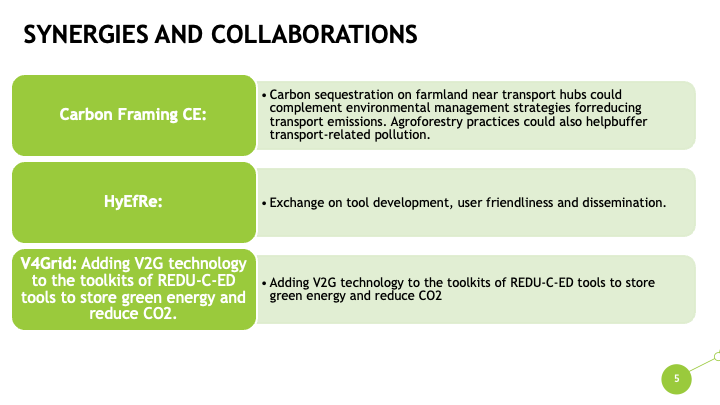Organised into nine thematic groups, participants presented their projects and concrete outputs, exploring opportunities for joint actions such as shared events, knowledge exchange, and new stakeholder outreach. By fostering synergies, projects worked to avoid duplication, enhance efficiency, and maximise the overall impact of their initiatives.
The methodology combined project presentations with interactive breakout discussions. On dedicated Miro boards, participants documented possible cooperation pathways, timelines, and synergetic activities.
Participants agreed to pursue joint events, exchange on tool development, and integrate functionalities of different platforms to accelerate progress toward clean energy transition. The presence of the Joint Secretariat of the Interreg Danube Programme further underlined complementarities, particularly in the field of energy communities, opening doors to cross-programme synergies.
For REDU-CE-D, the roundtables opened concrete collaboration paths with several projects:
– Carbon Framing CE: exploring synergies on carbon sequestration near transport hubs and agroforestry practices to complement EMS strategies.
– HyEfRe: exchanging knowledge on tool development, user-friendliness, and dissemination practices.
– V4Grid: adding vehicle-to-grid technology into REDU-CE-D’s toolkit to enhance storage of renewable energy and reduce CO2 emissions.
Following the roundtables, bilateral meetings among lead partners of the matched projects were organised to assess concrete collaboration opportunities and define the next steps. These discussions are paving the way towards joint initiatives and cross-learning activities that will strengthen the overall impact of the projects involved.
